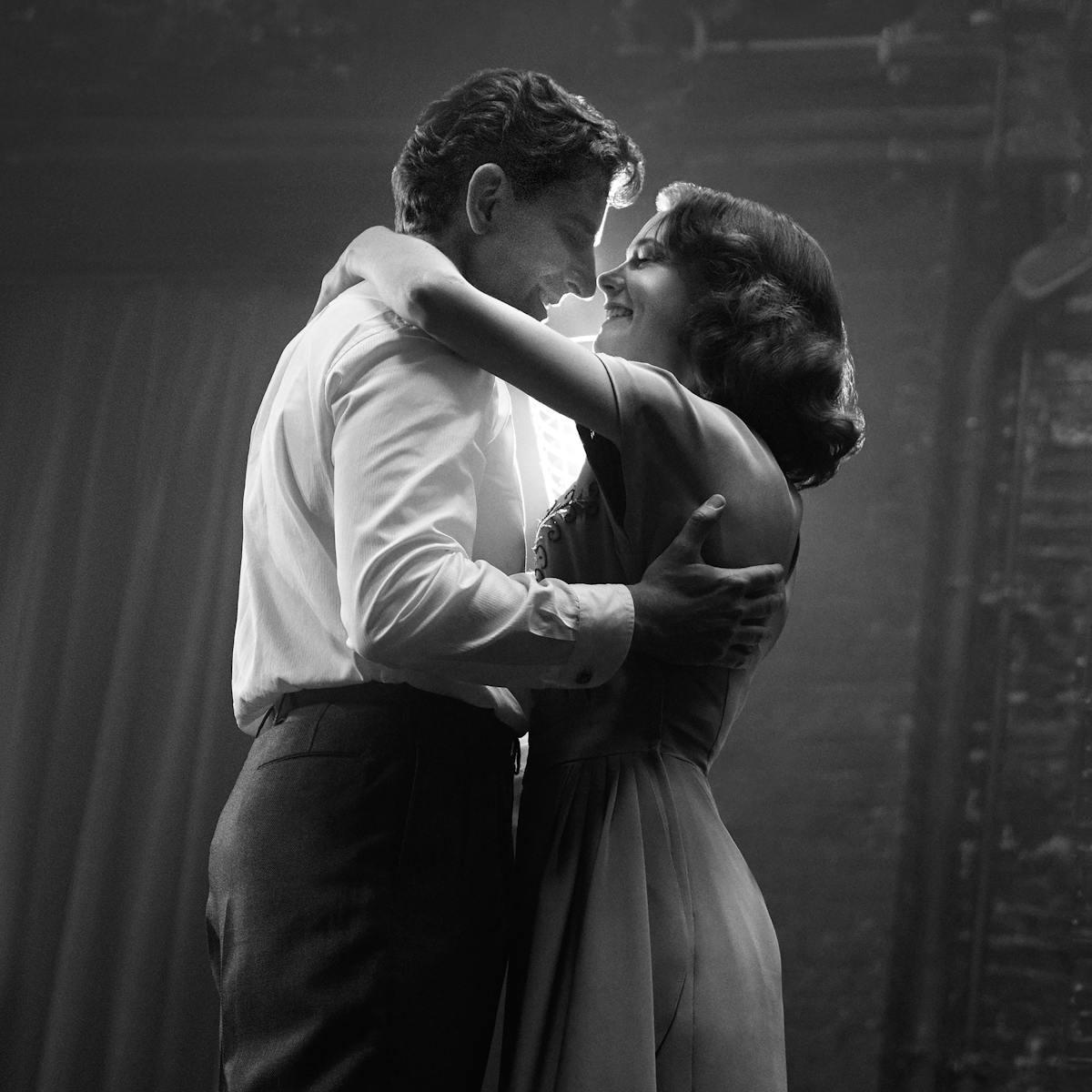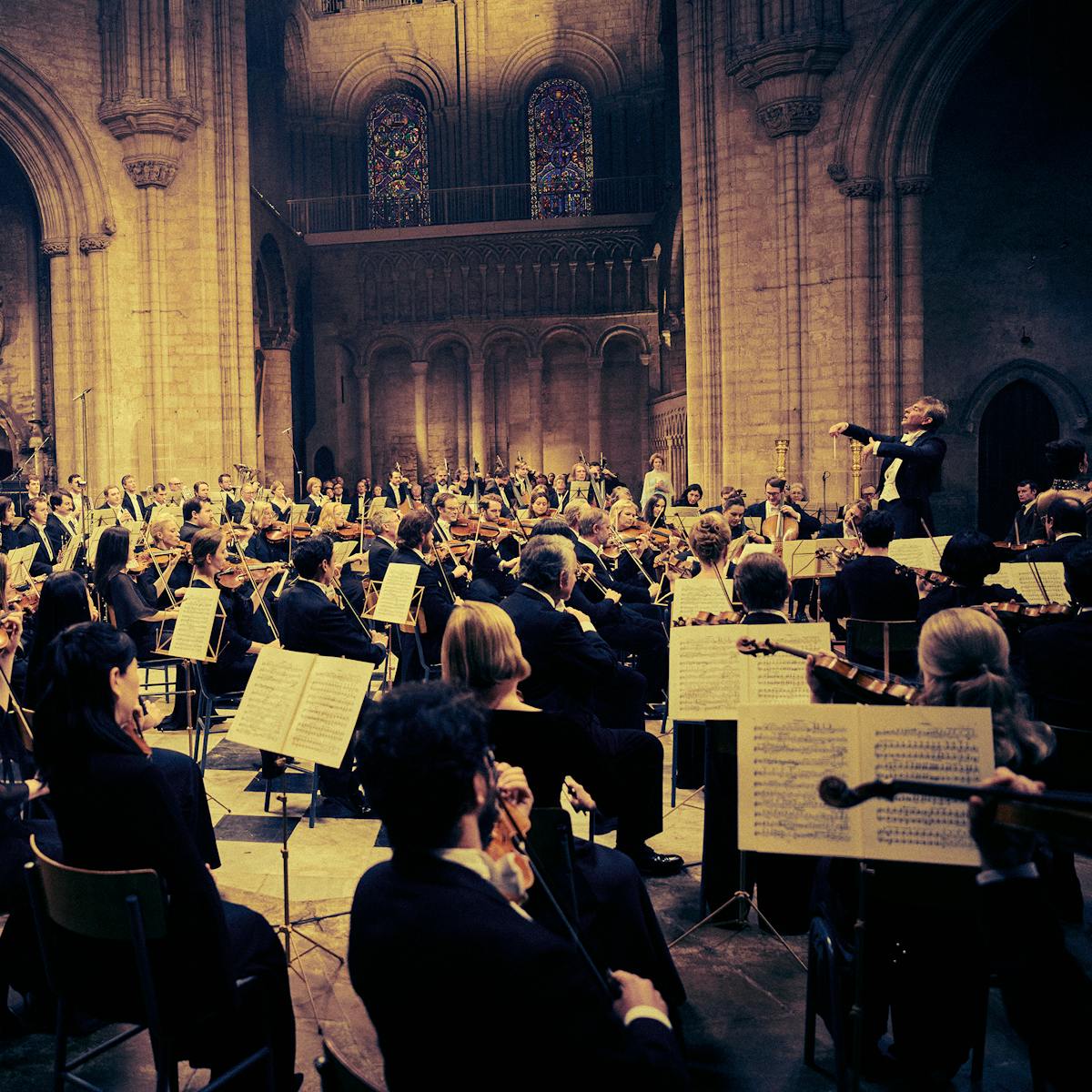The actor radiates as Leonard Bernstein’s wife, actor Felicia Montealegre, in Maestro.
For Carey Mulligan, even the most challenging days on the set of Maestro yielded nothing but joy. Bradley Cooper’s sweeping love story examines the relationship between legendary conductor and composer Leonard Bernstein and his wife, the actor, artist, and activist Felicia Montealegre Cohn Bernstein — played with wholehearted devotion by Mulligan. “You sometimes think, Oh, this is going to be taxing, and it is, but also, there’s the satisfaction of, Well, I think we did that right, or, That felt really honest. We did something that felt real,” remembers the actor.
“Honest” is the ideal way to describe the magnificent performance Mulligan delivers as Felicia opposite Cooper’s Leonard — both actors channel these twentieth-century icons in a way that’s simply astonishing. But as the gifted talent who finds a complicated soulmate in her husband, Mulligan conveys the depths of emotion that Felicia feels but rarely externalizes. Although she is the quieter of the dynamic pair, strength and intelligence radiate from her. She’s formidable yet vulnerable, and, in Mulligan’s hands, the tension between those warring aspects of Felicia’s psyche is ever-present onscreen.
Of course, Mulligan’s work in Maestro arrives as only the latest confirmation of her towering talent. The English actor enjoyed her first major screen appearance as Kitty Bennet in 2005’s Pride & Prejudice opposite Keira Knightley and Judi Dench, and only four years later, she delivered an Oscar-nominated performance in 2009’s 1960s-set coming-of-age tale An Education. She subsequently had numerous standout turns in such films as Never Let Me Go, Shame, Inside Llewyn Davis, Suffragette, Wildlife, and 2020’s subversive Promising Young Woman, which earned Mulligan her second Best Actress Oscar nomination for the blackly comic feminist revenge film.
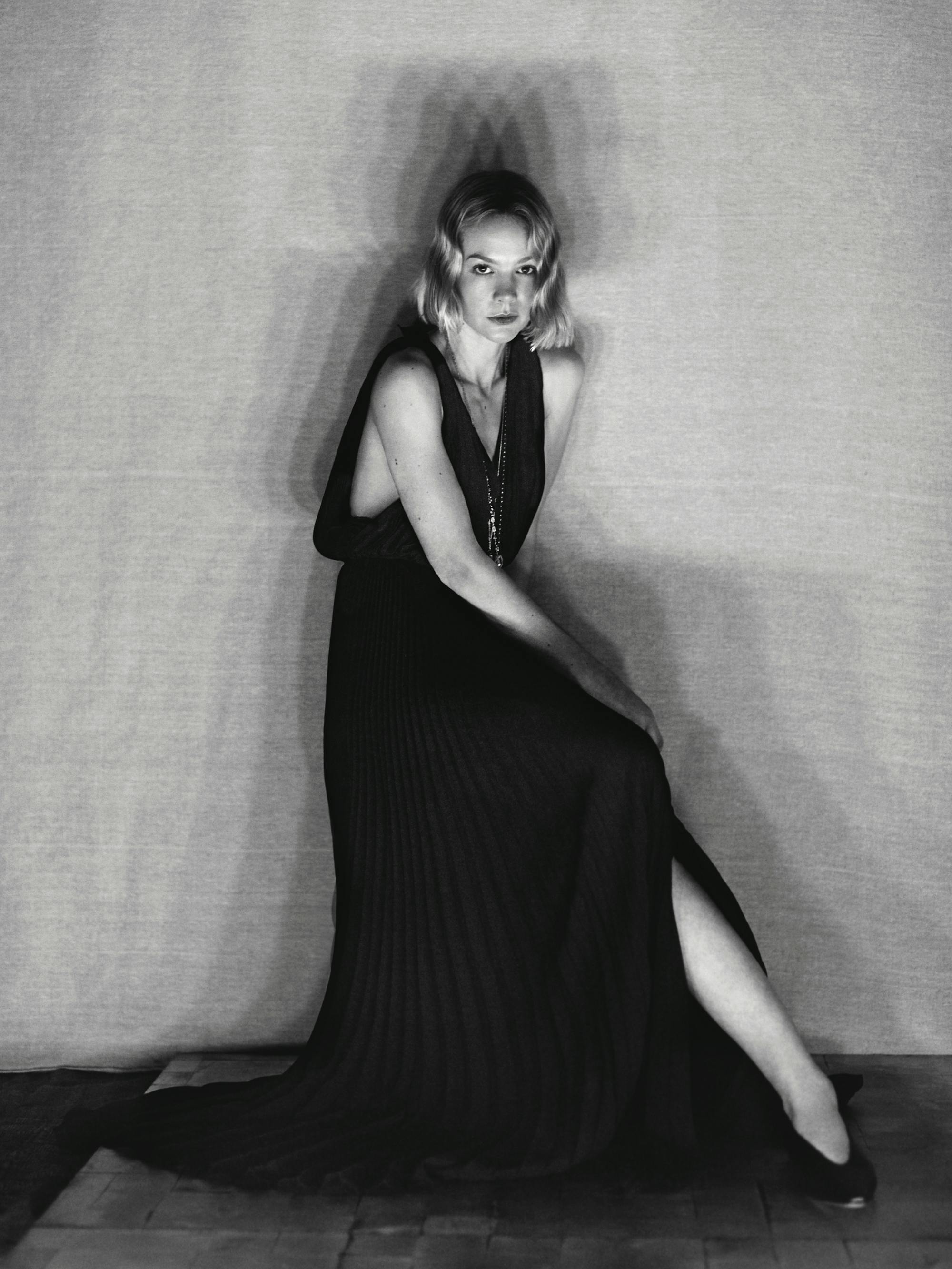
Carey Mulligan
In addition to her work onscreen, Mulligan made her Broadway debut in 2008 in a revival of Anton Chekhov’s The Seagull, and in 2015, she was nominated for a Tony Award for her leading role opposite Bill Nighy in Skylight. It was through theater that Mulligan and Cooper initially forged a collegial friendship, which eventually led to his suggestion that she take on the role in Maestro. “I was doing this one-woman show in the Minetta Lane Theatre in [Greenwich] Village, and he came to the first preview,” Mulligan recalls. “He said, ‘Can you come and have a coffee and talk about this thing I want to do?’”
Through months of extensive preparation, Mulligan gained tremendous insight into both Leonard and Felicia. “These were extraordinary people who had an extraordinary experience of the world,” Mulligan says. “But really what they had was just love and all the different ways in which love can be within a family, between siblings, between parents and their children. It’s all the richness of what a life lived together is like.”
An edited version of the conversation follows.
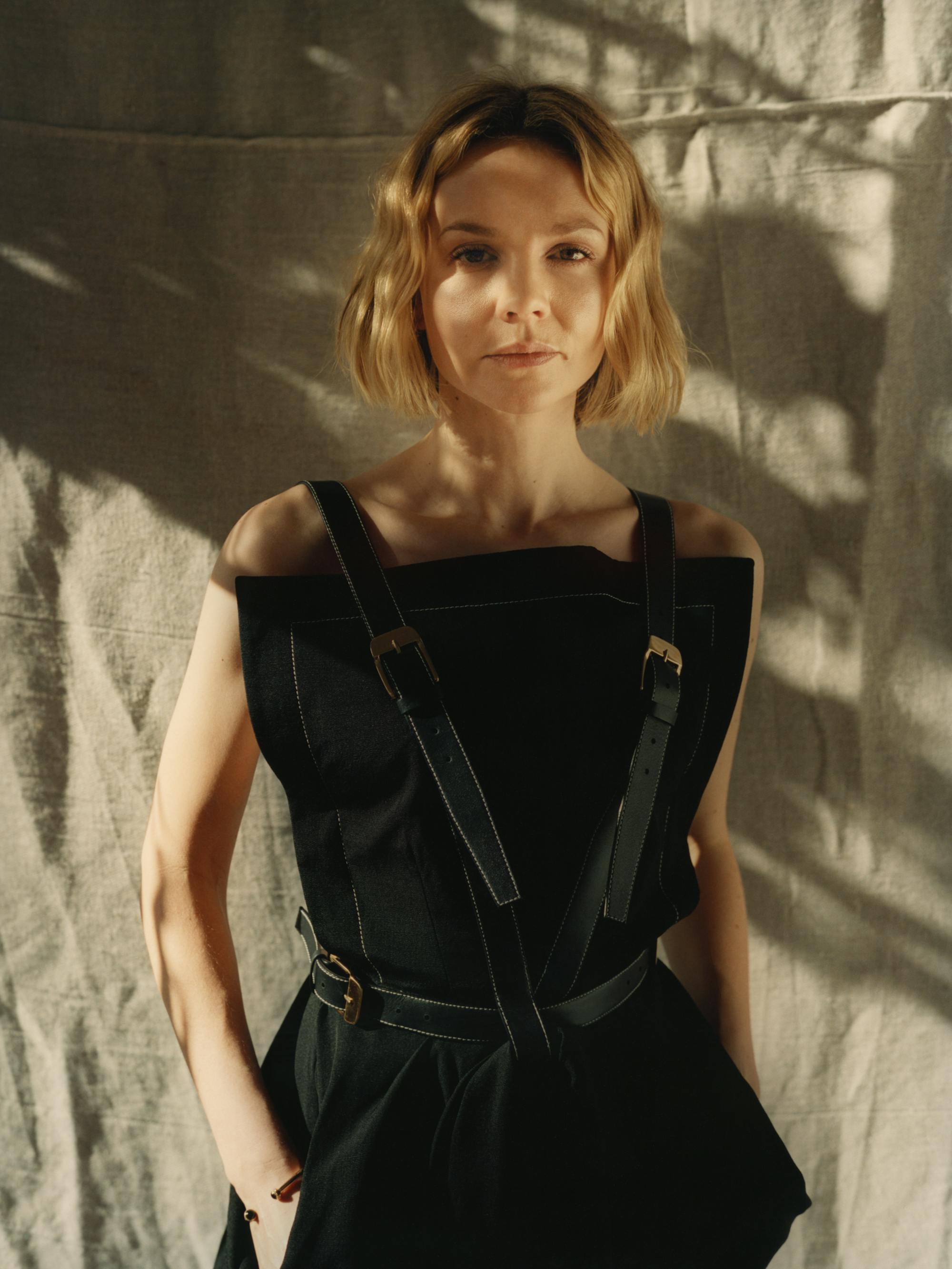
Carey Mulligan
Krista Smith: Bradley Cooper always had you in mind to play Felicia, and he approached you almost six years ago, correct? What was your connection prior to that conversation?
Carey Mulligan: It was 2018. I’m always changing my hair for different things, [and] at that time, he’d seen me with my hair up and stuff, and it was blonde. I think I was sort of coming into his head when he was thinking about [the role] and starting to write bits of [the script]. And we had known each other. Weirdly, he’s one of the first people I told that I was pregnant with my first baby. We were both in New York doing Broadway. He was doing The Elephant Man. I was doing Skylight with Bill Nighy, and we ended up doing this New York Times interviewing each other kind of thing. We did a photo shoot together, and halfway through this photo shoot where he was standing behind me, I was like, “By the way, I’m pregnant.” I don’t know why, I just trusted him. Then I carried on doing that play for months pregnant without anyone knowing, but he knew.
I look at your performances and I always feel you’re all in. You’ve rightfully received a few accolades for some of those extraordinary performances. What was the difference here?
CM: There’s no all-in like Bradley is all-in. The amount of work he did for this — as an actor, but also as a director and writer — was unlike anything I’ve seen before. He couldn’t have invested more of his life into the process. For me, there was lots of stuff about it that felt like a real risk. Bradley wanted to improvise in places in our characters, which meant being so comfortable in the dialect that we didn’t even need to think about it, and we were in our dialect all day, every day on set. Stuff like that had always made me go, “Oh gosh, that’s embarrassing.” But it wasn’t that I felt it was embarrassing. It was actually [that] I felt nervous. I thought, Oh, I don’t want anyone to think that I can’t do it or that I’m not good enough to do it. What he really was clear on from the outset was, “You can’t fail. There’s no bad; there’s no wrong. It’s all just up for play.” I put away my slight reticence about that kind of work and did it, and I’m so glad I did. I do think it’s changed most of how I’ll work going forward. But this was a very specific part. Playing a real person is such a responsibility.
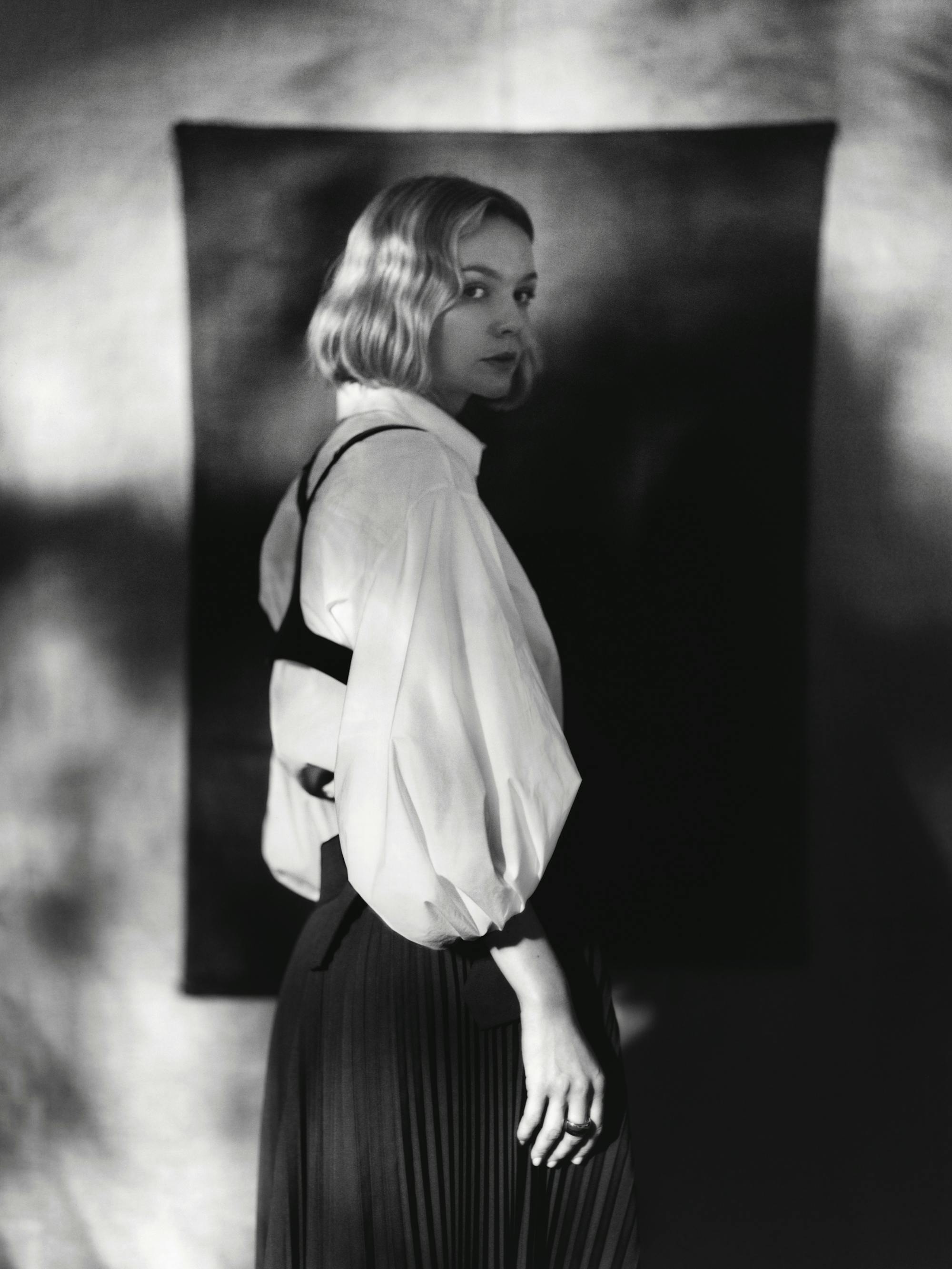
Carey Mulligan
I heard him talk about this dreamwork the two of you did, which is basically sharing your subconscious with someone else through the rehearsal process. You both really dug in.
CM: Yeah. You are talking about your dreams. The idea is that you remember your dreams, you write them down, you bring them into the workshop. The theory of it is basically connecting your character to your subconscious, so there are intrinsic links between you, which means that you don’t need to act, basically. There are things that feel a lot more like the character at your disposal and you don’t have to reach for stuff. I definitely found that that was the case.
I had a dream about my grandmother who’s passed away and whom I was very close to. She was probably the person I’ve known the most intimately in the latter part of her life, and that was very present when we were shooting the stuff at the end of Felicia’s life. There was something in the physicality, something in the way these moments of fury would come out of her — I can’t really explain it, but it was invaluable. Amazing things that are such a big part of the film came out of [that workshop] — [Lenny and Felicia] sitting back-to-back, that was something that came out of that workshop.

Carey Mulligan
One of the things that also strikes me is the way in which Bradley transforms into Lenny. In essence, it’s almost like you were being directed by Lenny, right?
CM: I couldn’t see the lines. It’s like when you are watching the film. It’s been so weird doing all this press with Bradley, because I, for months, genuinely, was working with Lenny. The odd day where he wasn’t Lenny I found really disconcerting. But it didn’t feel like artifice — it just felt like, Oh, he’s comfortably this other person now. And because Bradley was directing, he was Lenny, he deliberately took the onus off me. I didn’t have to use all the logistical energy and emotional energy of being a leader on set; he had to do that. The thing that he did for me was to allow me to watch and to be close, but I didn’t have to put on a show for anyone. I could just be. Felicia just observes, she just watches. Things reflect onto her. Usually, that feels like there’s a lack of agency in a character. It didn’t feel that way at all with Felicia. I felt like my role was just to be near him.
There were all these funny behind-the-scenes photos of us where he’s clearly deep in thought. He’s sometimes got his eyes closed, and I’m standing one foot away from him, doing almost exactly the same mannerisms. I was always just there. It was weird. We became very much their dynamic. It was always that Lenny would be leading things, Felicia would be close by, and that was how the whole film was. Even now, I feel like there’s a little bit of a hangover. I noticed it on the red carpet. I was translating things that he was trying to say to [reporters]. He’d be trying to say something, and I’d be like, “Oh, I’m just going to explain what he means.” It was a delightful little thing where it did bleed over into our real lives.
That line that she says in the film — 'Let’s give it a whirl' — it’s such a wonderfully playful expression of how to take on life.
Well, let’s talk about that Thanksgiving scene in the Dakota, the famous apartment building in New York where Lenny and Felicia lived, which was completely re-created. You feel the tension so acutely as an audience member. How many takes was that?
CM: It was three takes, and that’s the third take. The first two takes were fine, but there was something about them that felt like there was no crescendo. The third take, my position moved. I was in the window. I was standing up, and I had a bit more status. Bradley came in a little bit more hungover than he’d been in the previous takes. He wouldn’t take his sunglasses off. He bumped into the furniture. All these things were little annoying nuggets that pushed and pushed and pushed. And for some reason, that third take just took off. At the end, he pauses to hear the children. Of course, the children weren’t outside, [but] I knew he must be pausing for someone at the door. I left the room, and I waited for a second until he cut, because [the scene includes] a few more seconds [with the camera] on him standing on his own in the room. Then I walked back in, and we looked at each other and we were like, “Well, that’s it, right?”

Carey Mulligan
Photography by Rory Payne courtesy of Trunk Archives.
The film spans four decades. Bradley worked with an incredible group of costume, hair, and makeup professionals, and you wore some of Felicia’s clothes that the Bernstein family had. How did that help you portray this woman over the course of her life?
CM: We were aided a lot by costume and makeup. The way that they had to consider hair and makeup for the black-and-white film was so interesting because of course it’s not how you shoot for color. And we didn’t shoot digitally. We shot on black and white film, so they had to make really clear choices about how they were going to make us up and put us in costumes for that stuff. I thought playing a character over 30 years I’d need to draw up some sort of chart to figure out, Right, on this day, this is how I’m feeling. But when it came to it, looking in the mirror did so much work, particularly when I was [shooting the scenes when Felicia was] ill. The makeup that Sian Grigg and Duncan Jarman, who did the prosthetics, did on me was so brilliant. I would look in the mirror on those days when we were shooting that stuff, [and] it made you feel like crying, just to see that. It was really affecting.
What will you take from this experience with Bradley, and from Felicia and Lenny?
CM: That line that she says in the film — “Let’s give it a whirl” — it’s such a wonderfully playful expression of how to take on life. That became a bit of a mantra for this job. I knew that Bradley would make a good film, but I don’t think I had certainty over how this would go. And I’m so glad that we did give it a whirl. So, I think, yeah, that’s my mantra coming out of this job. That will stay with me from her.

